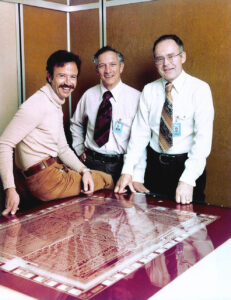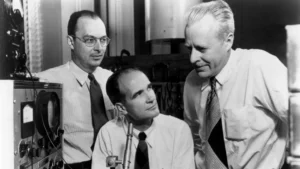Introduction:
Steve Jobs, widely regarded as a visionary in the realm of technology and innovation, is often associated with revolutionizing personal computing and the way we interact with technology. While he may not have been directly involved in the semiconductor industry, his pioneering work in the personal computer industry had a profound impact on the development and transformation of semiconductors. This blog post delves into how Steve Jobs indirectly contributed to the revolution of semiconductors through his relentless pursuit of smaller, more powerful chips. Additionally, his focus on miniaturization, efficiency, and innovation played a crucial role in shaping the semiconductor industry.
Follow us on Linkedin for everything around Semiconductors & AI
Demand for Smaller, More Powerful Chips:
In the early days of personal computing, semiconductors were bulky, expensive, and inefficient. However, recognizing the potential for growth, Steve Jobs challenged his team to develop smaller, more powerful chips that could drive the capabilities of Apple’s products. Consequently, this demand for improved performance led to the creation of groundbreaking chips like the Motorola 68000 processor. Its advanced architecture set the stage for subsequent innovations, inspiring the semiconductor industry to explore new avenues for chip design and manufacturing. Furthermore, this breakthrough prompted a wave of research and development, driving further advancements in semiconductor technology. Additionally, it ignited a competitive spirit among companies vying to push the boundaries of chip performance. Consequently, this era marked a turning point in the evolution of semiconductors, propelling the industry towards unprecedented levels of miniaturization and efficiency.
Custom-Designed Chips for Differentiation:
A key aspect of Jobs’ approach was his insistence on using custom-designed chips rather than off-the-shelf components.This strategic decision allowed Apple to exert greater control over the performance and features of its products. Additionally, by developing chips tailored to their specific needs, Apple was able to differentiate itself from competitors and offer unique user experiences. Furthermore, this emphasis on customization sparked a trend in the industry, motivating other companies to explore custom chip solutions that aligned with their vision. Consequently, the landscape of semiconductor development began to evolve, with a growing emphasis on tailored solutions for enhanced performance and functionality.
Driving Semiconductor Manufacturing Processes:
Jobs’ focus on miniaturization and efficiency wasn’t limited to the design of individual chips. It extended to the broader semiconductor manufacturing process. Semiconductors rely on intricate manufacturing techniques, and Jobs’ pursuit of smaller and more efficient products pushed the boundaries of semiconductor fabrication. Notably, the technique of photolithography, used to create the intricate patterns on semiconductor chips, saw significant advancements, thanks in part to the innovations pioneered by Jobs and his contemporaries.
Follow us on Linkedin for everything around Semiconductors & AI
Enabling New Semiconductor Applications:
Perhaps one of the most impactful contributions Jobs made to the semiconductor industry was through the development of new applications. The iconic iPhone stands as a testament to his visionary thinking. The iPhone’s success hinged on the availability of powerful yet energy-efficient semiconductors. Jobs’ vision for a compact, all-in-one device that could handle a multitude of tasks required semiconductor technologies that could deliver high performance without compromising battery life. This demand spurred the creation of chips with unprecedented power efficiency, paving the way for advancements in mobile computing and countless other applications.
How Malaysia became a Superpower in Semiconductor Manufacturing – techovedas
Conclusion:
While Steve Jobs may not have been a direct participant in the semiconductor industry, his influence reverberated throughout its evolution. Through his work in the personal computer industry, Jobs catalyzed a series of innovations that led to smaller, more powerful chips, custom-designed solutions, advanced manufacturing processes, and breakthrough semiconductor applications. His commitment to pushing the boundaries of technology and his unwavering vision for the future of computing played a pivotal role in revolutionizing semiconductors and shaping the modern technological landscape.



